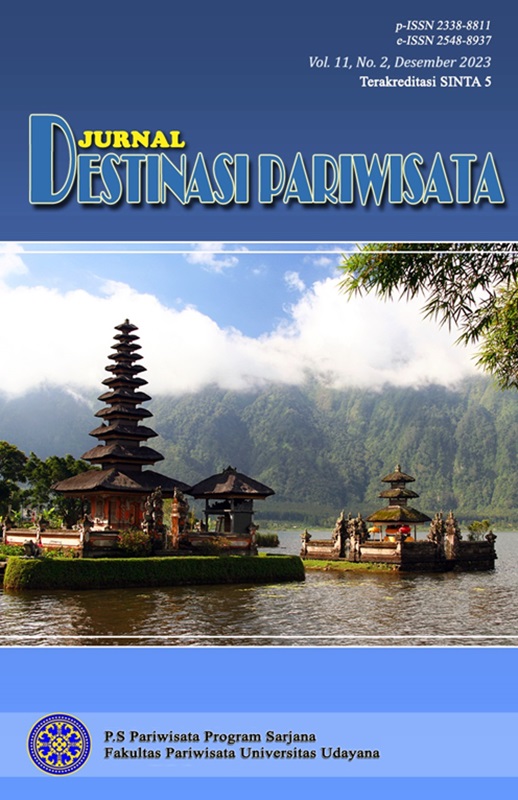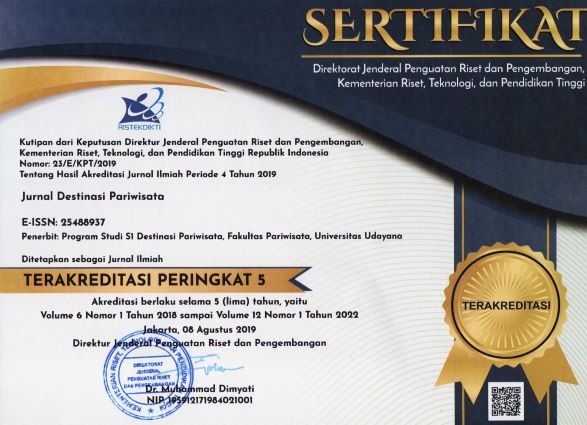Pengelolaan Daya Tarik Wisata Ke’te Kesu’ Oleh Masyarakat Lokal Sebagai Wisata Budaya, Di Kabupaten Toraja Utara Provinsi Sulawesi Selatan
Abstract
This research aims to determine the role of the community in the management of cultural tourism in Ke'te Kesu' in Toraja Utara Regency. The type of data used in this research is qualitative data obtained from two data sources, namely primary data and secondary data. To collect this data, several data collection techniques were used, including interviews and documentation. Meanwhile, the technique for determining informants selected in this study is purposive sampling technique. Through this technique, local communities were selected as key informants. In analyzing the data, a data analysis technique consisting of four stages was employed, namely data collection, data reduction, data presentation, and conclusion drawing. The results showed that there were several planning activities related to the management of Ke'te Kesu' by the community. These planning activities include sustainability planning, operational process planning, environmental maintenance planning, human resource planning, and advisory planning. Meanwhile, community participation consists of a bottom-up planning approach and is classified as spontaneous community participation in tourism development.
Keywords: Cultural Tourism, Role of Community, Management
Downloads









